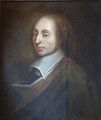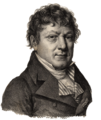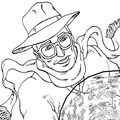Template:Selected anniversaries/August 19: Difference between revisions
No edit summary |
No edit summary |
||
| Line 57: | Line 57: | ||
||Joseph Gilbert Hoffman born ... physicist and biophysicist who brought atomic isotopes into the battle against cancer. During WW II, he developed a radio proximity fuse and later was a health-physics scientist with "Manhattan Project." Hoffman studied nine accident victims of radiation disease at Los Alamos in Aug 1945 and May 1946. This research revealed for the first time that atoms of living human tissue could be transformed into radioactive atoms. He recognized "a completely new approach to studying the metabolism of atoms in living tissue and a new way of probing the complicated system of gene cells that determine heredity," and such knowledge was indispensable to understanding the mysteries of cancer research in which he engaged for the rest of his life. Pic: https://www.todayinsci.com/8/8_19.htm | ||Joseph Gilbert Hoffman born ... physicist and biophysicist who brought atomic isotopes into the battle against cancer. During WW II, he developed a radio proximity fuse and later was a health-physics scientist with "Manhattan Project." Hoffman studied nine accident victims of radiation disease at Los Alamos in Aug 1945 and May 1946. This research revealed for the first time that atoms of living human tissue could be transformed into radioactive atoms. He recognized "a completely new approach to studying the metabolism of atoms in living tissue and a new way of probing the complicated system of gene cells that determine heredity," and such knowledge was indispensable to understanding the mysteries of cancer research in which he engaged for the rest of his life. Pic: https://www.todayinsci.com/8/8_19.htm | ||
File:Vilfredo Pareto 1870s.jpg|link=Vilfredo Pareto (nonfiction)|1923: Engineer, sociologist, economist, political scientist, and philosopher [[Vilfredo Pareto (nonfiction)|Vilfredo Pareto]] dies. He applied mathematics to economic analysis, asserting that the distribution of incomes and wealth in society is not random and that a consistent pattern appears throughout history, in all parts of the world and in all societies. | |||
||1924: Willard Boyle born ... physicist and academic, Nobel Prize laureate. | ||1924: Willard Boyle born ... physicist and academic, Nobel Prize laureate. | ||
Revision as of 19:54, 15 August 2018
1662: Mathematician, physicist, inventor, writer, and Christian philosopher Blaise Pascal dies. He did pioneering work on calculating machines.
1758: Jean-Étienne Montucla received the censor's approbation for his Histoire des mathematiques, which is justly famous as a history of the mathematical sciences.
1822: Mathematician and astronomer Jean Baptiste Joseph Delambre dies. He was one of the first astronomers to derive astronomical equations from analytical formulas.
1823: Red Eyes Fighting depicts martial artist and crime-fighter Red Eyes breaking up a math lab.
1906: Inventor Philo Farnsworth born. He will make many crucial contributions to the early development of all-electronic television.
1923: Engineer, sociologist, economist, political scientist, and philosopher Vilfredo Pareto dies. He applied mathematics to economic analysis, asserting that the distribution of incomes and wealth in society is not random and that a consistent pattern appears throughout history, in all parts of the world and in all societies.
1993: Actor-cryptographer Niles Cartouchian confirms that he personally designed the computational security protocols featured in the action-adventure film Dard Hunter, Glyph Warden.
1994: Chemist, biochemist, peace activist, author, and educator Linus Pauling dies.







